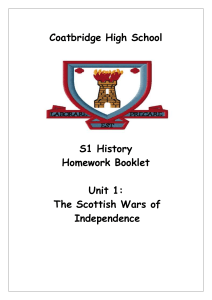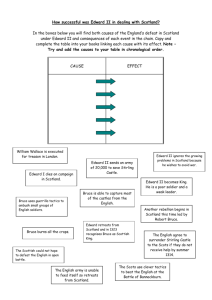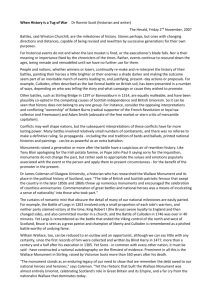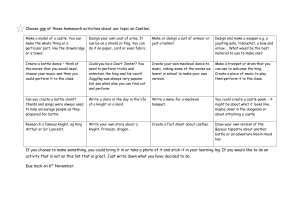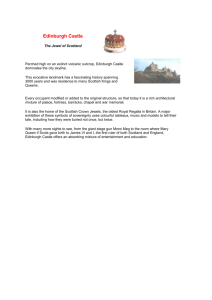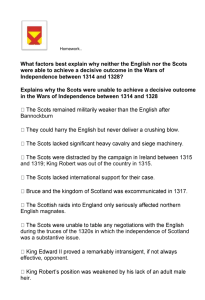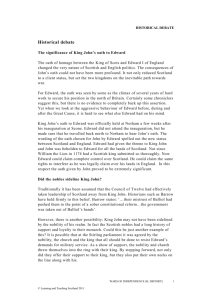Example of `How useful` question
advertisement
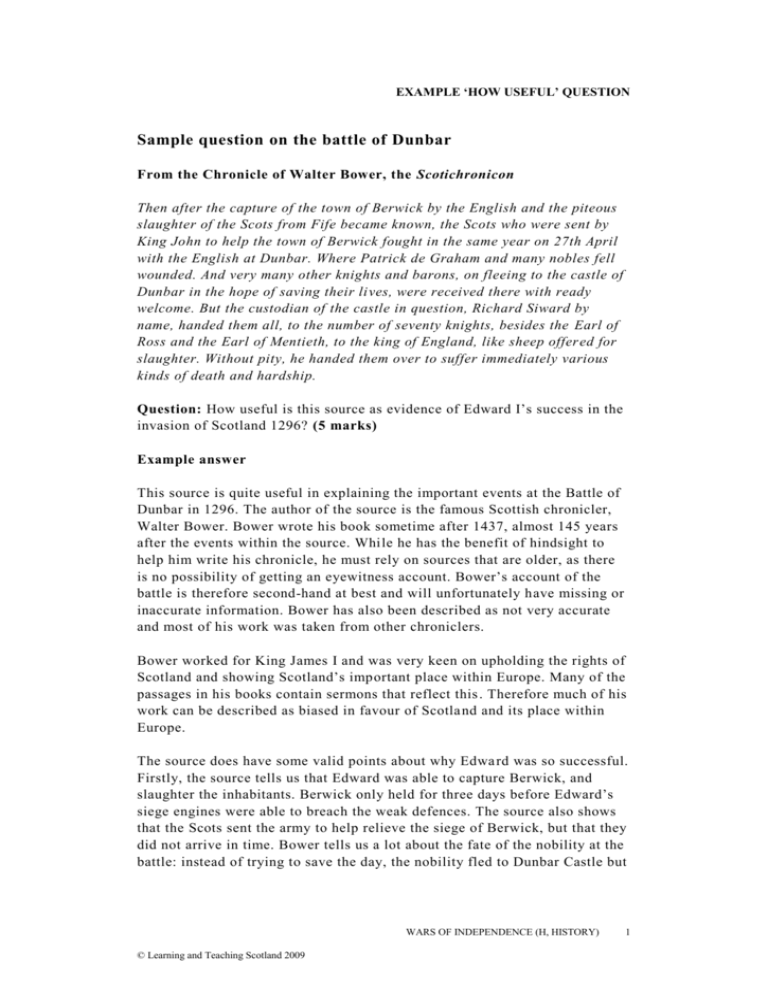
EXAMPLE ‘HOW USEFUL’ QUESTION Sample question on the battle of Dunbar From the Chronicle of Walter Bower, the Scotichronicon Then after the capture of the town of Berwick by the English and the piteous slaughter of the Scots from Fife became known, the Scots who were sent by King John to help the town of Berwick fought in the same year on 27th April with the English at Dunbar. Where Patrick de Graham and many nobles fell wounded. And very many other knights and barons, on fleeing to the castle of Dunbar in the hope of saving their lives, were received there with ready welcome. But the custodian of the castle in question, Richard Siward by name, handed them all, to the number of seventy knights, besides the Earl of Ross and the Earl of Mentieth, to the king of England, like sheep offer ed for slaughter. Without pity, he handed them over to suffer immediately various kinds of death and hardship. Question: How useful is this source as evidence of Edward I’s success in the invasion of Scotland 1296? (5 marks) Example answer This source is quite useful in explaining the important events at the Battle of Dunbar in 1296. The author of the source is the famous Scottish chronicler, Walter Bower. Bower wrote his book sometime after 1437, almost 145 years after the events within the source. While he has the benefit of hindsight to help him write his chronicle, he must rely on sources that are older, as there is no possibility of getting an eyewitness account. Bower’s account of the battle is therefore second-hand at best and will unfortunately have missing or inaccurate information. Bower has also been described as not very accurate and most of his work was taken from other chroniclers. Bower worked for King James I and was very keen on upholding the rights of Scotland and showing Scotland’s important place within Europe. Many of the passages in his books contain sermons that reflect this . Therefore much of his work can be described as biased in favour of Scotla nd and its place within Europe. The source does have some valid points about why Edwa rd was so successful. Firstly, the source tells us that Edward was able to capture Berwick, and slaughter the inhabitants. Berwick only held for three days before Edward’s siege engines were able to breach the weak defences. The source also shows that the Scots sent the army to help relieve the siege of Berwick, but that they did not arrive in time. Bower tells us a lot about the fate of the nobility at the battle: instead of trying to save the day, the nobility fled to Dunbar Castle but WARS OF INDEPENDENCE (H, HISTORY) © Learning and Teaching Scotland 2009 1 EXAMPLE ‘HOW USEFUL’ QUESTION they were betrayed by Richard Siward at the castle of Dunbar and handed over to Edward. Some were killed. However, the source does have some important limitations about the events at Dunbar. Firstly it makes no mention of what happened to the majority of the Scots in the common army. There were at least 10,000 commoners fighting for the Scottish king, and the source fails to mention that they were for the most part untrained farmers who had little or no experience in battle. Secondly, it fails to explain how the Scots lost the battle. It doesn’t tell us, for example, that the Scots leaders mistook simple manoeuvres by the Earl of Surrey for an English retreat, and ordered a fatal charge that saw the Scots soldiers easily cut down by the English knights. Finally, the source m akes no mention of the capitulation of the Scottish resistance after Dunbar. Most of the nobility were either killed or captured at the battle, and that left a vacuum in the leadership of the Scots. Important castles like Stirling and Edinburgh gave up with only a limited attempt at resistance. The source is therefore only partly useful as evidence of the Edward’s success as it fails to provide much detail beyond the capture of Berwick and the battle of Dunbar. It fails to show that the Scottish spirit ha d been crushed and the rest of the invasion was a formality. How the marks are allocated: Provenance – up to 2 marks can be given for origin and purpose . Here the candidate shows a lot of knowledge about Bower and the limitations of his writing (1 mark), and demonstrates a possible purpose of the source, a desire to place Scotland in a European context in the best possible light ( 1 mark). Up to 2 marks can be awarded from the content of the source . The student explains that the source does have some usef ul points about the battle, pointing out that the Scots were sent to relieve Berwick but did not arrive in time, that many died, although only one is named, and that the nobles were betrayed after the battle when they fled to Dunbar ( 2 marks). Up to 2 marks can be awarded for recall. The answer demonstrates the limitations of the source by explaining that it had very little information about the weakness of the common soldiers ( 1 mark) and that it did not highlight effects Dunbar had on the Scottish resist ance (1 mark). Total 5 marks 2 WARS OF INDEPENDENCE (H, HISTORY) © Learning and Teaching Scotland 2009
